The Complete Guide to Cummins Diesel Engines: Performance, Reliability, and Maintenance for 2025
Aug 25th 2025
Table of Contents
- Introduction to Cummins Diesel Excellence
- Understanding Cummins Engine Technology
- Popular Cummins Engine Models and Applications
- The 5.9L Cummins: A Legend in Diesel Performance
- The 6.7L Cummins: Modern Power and Efficiency
- Cummins ISX Series: Heavy Duty Excellence
- Essential Maintenance for Cummins Engines
- Common Cummins Engine Problems and Solutions
- Performance Upgrades and Modifications
- Selecting Quality Replacement Parts
- Cummins vs Competition: Making the Right Choice
- Professional Installation and Service Tips
- Frequently Asked Questions
Introduction to Cummins Diesel Excellence
Cummins diesel engines have powered American trucks, equipment, and machinery for over a century, establishing themselves as the gold standard in diesel technology. From the iconic 5.9L that revolutionized pickup trucks to the mighty ISX series dominating commercial transportation, Cummins engines deliver unmatched reliability, efficiency, and raw power that professionals and enthusiasts trust.
At Bostech Auto, we understand that your Cummins engine represents more than just a powerplant. It represents your livelihood, your passion, and your investment in quality. Whether you operate a fleet of commercial vehicles, own a Ram pickup for work and play, or maintain heavy equipment, understanding your Cummins diesel engine helps you maximize performance, minimize downtime, and extend engine life well beyond expectations.
The modern diesel landscape continues evolving with stricter emissions standards, advanced fuel injection systems, and sophisticated engine management technologies. Yet Cummins remains at the forefront, adapting their legendary durability to meet contemporary demands without sacrificing the robust construction that made them famous. This comprehensive guide explores everything you need to know about Cummins engines, from basic operation principles to advanced troubleshooting techniques.
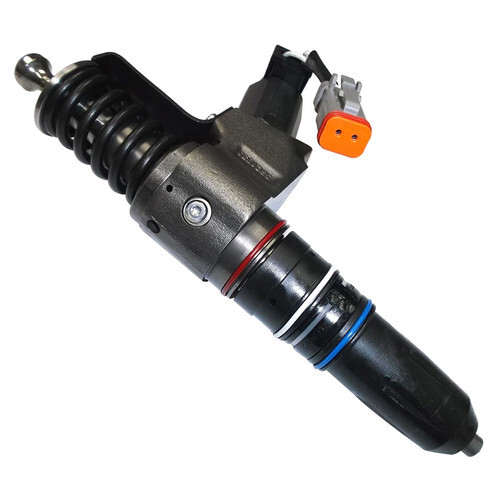
Understanding Cummins Engine Technology
Core Technology Components
Cummins diesel engines utilize advanced compression ignition technology that differs fundamentally from gasoline engines:
- Compression ratios typically range from 16:1 to 20:1
- Higher compression than gasoline engines generates necessary heat
- Fuel combustion occurs without spark plugs
- Creates signature diesel efficiency characteristics
- Delivers exceptional torque output across RPM range
The fuel injection system serves as the heart of any Cummins engine. Early mechanical injection pumps gave way to sophisticated common rail systems that precisely control fuel delivery at pressures exceeding 30,000 PSI. These systems enable multiple injection events per combustion cycle, reducing noise, improving efficiency, and minimizing emissions. The transition from rotary pumps to CP3 and CP4.2 high pressure pumps marked significant milestones in Cummins development.
Turbocharging Excellence
- Variable geometry turbochargers (VGT) optimize boost across entire RPM range
- Electronic actuators precisely control vane position
- Holset turbochargers withstand extreme temperatures and pressures
- Designed for hundreds of thousands of miles of service
- Eliminates traditional turbo lag while maximizing efficiency
Modern Cummins engines incorporate sophisticated emissions control systems to meet EPA regulations. Exhaust Gas Recirculation (EGR) reduces nitrogen oxide formation by recirculating cooled exhaust gases back into the intake. Diesel Particulate Filters (DPF) capture soot particles, periodically burning them off through regeneration cycles. Selective Catalytic Reduction (SCR) systems inject Diesel Exhaust Fluid (DEF) to further reduce emissions without compromising performance.
Engine Construction Features
The engine block construction showcases Cummins commitment to durability. Cast iron blocks provide exceptional strength and thermal stability, while forged steel connecting rods and crankshafts handle tremendous forces generated during combustion. Many Cummins engines feature wet cylinder liners that can be replaced during rebuilds, extending engine life indefinitely with proper maintenance.
Cooling systems in Cummins engines go beyond simple temperature management:
- Multiple cooling circuits for optimal component temperature control
- Oil coolers maintain proper lubricant temperatures under heavy loads
- EGR coolers reduce exhaust gas temperatures before recirculation
- Advanced designs prevent hot spots and thermal stress
- Proper maintenance proves critical for preventing costly failures
Popular Cummins Engine Models and Applications
The Cummins engine family spans from compact four cylinder powerplants to massive industrial engines producing thousands of horsepower. Each model serves specific applications with tailored characteristics matching intended use. Understanding different Cummins models helps identify the right engine for your needs and ensures proper parts selection during maintenance.
B Series Engines (5.9L and 6.7L)
The B Series engines dominate the pickup truck market:
- Power Ram trucks from 1989 to present
- Perfect balance of size, weight, and output
- Inline six cylinder configuration ensures smooth operation
- Consistently outsell competitors in light duty segment
- Proven reputation for longevity and capability
ISB Medium Duty Applications
ISB engines serve critical commercial sectors in delivery trucks, school buses, and motorhomes. Available in 5.9L and 6.7L displacements, ISB engines share architecture with pickup variants but feature programming and components optimized for commercial use. Higher duty cycles and extended idle times require specific maintenance considerations for ISB applications.
ISL and ISL9 Bridge Platforms
- Power regional haul trucks and refuse vehicles
- Serve emergency apparatus requiring weight savings
- Advanced materials enable impressive power density
- Bridge gap between medium and heavy duty needs
- Maintain Cummins durability in lighter packages
ISX and X15 engines represent Cummins heavy duty offerings for long haul trucking and severe service applications. These engines produce up to 605 horsepower and 2,050 pound feet of torque while meeting stringent emissions standards. The modular design facilitates in frame overhauls, minimizing downtime for commercial operators.
Specialized Application Engines
QSB engines serve industrial and marine applications requiring stationary or constant speed operation. These engines feature specific cooling, lubrication, and control systems adapted for generator sets, pumps, and marine propulsion. Understanding application specific requirements ensures proper parts selection for QSB engines.
Cummins also produces specialized engines for mining, rail, and power generation:
- Unique configurations for extreme duty cycles
- Components not found in automotive applications
- Require proper identification for parts ordering
- Custom cooling and filtration systems
- Extended service interval capabilities
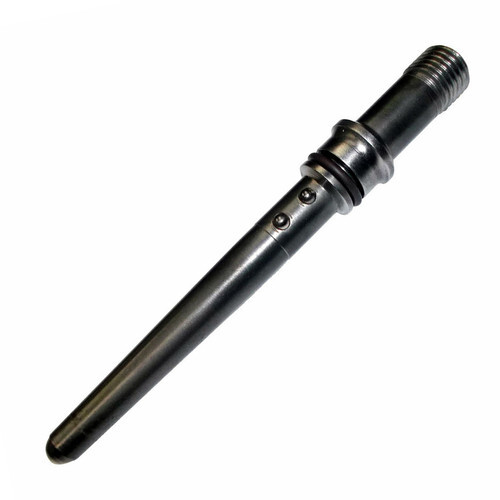
The 5.9L Cummins: A Legend in Diesel Performance
Evolution Through Generations
The 5.9L Cummins engine earned legendary status through decades of proven reliability in Ram pickups from 1989 to 2007. This engine established Cummins reputation in the light duty market and remains highly sought after by enthusiasts and professionals who value simplicity and durability over complex modern systems.
First Generation (1989-1993):
- Mechanical Bosch VE injection pump
- Simple turbocharged aspiration
- Modest power by modern standards
- Foundation for future development
- Many still operating with minimal maintenance
Second generation engines from 1994 to 1998 introduced the Bosch P7100 injection pump, earning the nickname "P Pump" among enthusiasts. This mechanical pump offers incredible tuning potential, with modified engines easily exceeding 1,000 horsepower. The simplicity of P Pump engines makes them ideal for performance builds and off road applications where electronics prove vulnerable.
VP44 Electronic Era (1998.5-2002): The transition to electronic control brought improved drivability and emissions compliance through the VP44 injection pump. However, these pumps gained notoriety for failures often caused by inadequate fuel supply. Proper lift pump installation and maintenance proves critical for VP44 longevity, with quality aftermarket solutions available from suppliers like Bostech Auto.
Common Rail Revolution (2003-2007)
- Bosch CP3 high pressure pump transformed performance
- Piezoelectric injectors enabled precise fuel control
- Dramatically improved refinement over earlier models
- Maintained traditional Cummins durability
- Exceptional response to tuning modifications
Throughout production, the 5.9L maintained consistent architecture with an iron block, iron head, and overhead valve configuration. The 4.02 inch bore and 4.72 inch stroke created optimal combustion characteristics for diesel operation. Seven main bearings supported the forged steel crankshaft, contributing to exceptional bottom end durability.
Maintenance and Modifications
Maintenance requirements for 5.9L engines remain straightforward compared to modern counterparts. Regular oil changes using quality diesel rated lubricants, fuel filter replacement, and valve adjustment represent primary service needs. Many 5.9L engines exceed 500,000 miles with basic maintenance, though injector and turbocharger replacement typically occurs during this timeframe.
Common modifications for 5.9L engines include:
- Cold air intake systems for improved breathing
- Performance exhaust systems reducing back pressure
- Electronic tuning for increased power output
- Larger turbochargers supporting significant gains
- Modified injection pumps for extreme builds
- Upgraded head studs handling increased pressure
- Transmission upgrades managing additional torque
The 6.7L Cummins: Modern Power and Efficiency
Introduced in 2007.5 model year Ram trucks, the 6.7L Cummins represents evolutionary advancement from the venerable 5.9L while meeting increasingly strict emissions standards. Increased displacement, advanced emissions systems, and sophisticated engine management enable impressive power output with improved fuel economy and reduced environmental impact.
Key Design Improvements
The displacement increase to 6.7 liters came through strategic changes:
- Bore enlarged to 4.21 inches for better breathing
- Stroke increased to 4.88 inches maintaining favorable ratios
- Stronger connecting rods handle higher cylinder pressures
- Upgraded pistons withstand increased boost levels
- Improved materials throughout for enhanced durability
Advanced Turbocharging Systems
Variable geometry turbocharging became standard on 6.7L engines, eliminating turbo lag while providing strong boost throughout the RPM range. The Holset HE341VE and later HE351VE turbochargers feature electronic actuators that precisely control vane position based on operating conditions. Proper maintenance of VGT systems prevents sticking vanes that cause poor performance or catastrophic failure.
Comprehensive Emissions Technology
Exhaust Gas Recirculation (EGR):
- Reduces combustion temperatures to minimize NOx
- EGR cooler transfers heat to engine coolant
- Requires robust cooling system maintenance
- Common failure point on higher mileage engines
- Updated designs improve long-term reliability
Diesel Particulate Filter systems capture soot particles during normal operation, periodically burning accumulated material through regeneration cycles. Active regeneration injects fuel during exhaust stroke to raise exhaust temperatures. Passive regeneration occurs during highway driving when exhaust temperatures naturally reach required levels. Proper driving habits and maintenance prevent excessive regeneration cycles that impact fuel economy.
Selective Catalytic Reduction (2013+): The SCR system represents advanced emissions control technology, injecting Diesel Exhaust Fluid into the exhaust stream. The DEF reacts with NOx in the catalyst, converting harmful emissions to nitrogen and water. DEF consumption typically ranges from 2 to 3 percent of fuel consumption, requiring periodic refills between oil changes.
Maintenance Considerations
- Extended oil change intervals up to 15,000 miles possible
- Improved filtration enables longer service periods
- Severe service applications benefit from shorter intervals
- Grid heater systems replace traditional glow plugs
- Better cold start performance without failure-prone components
Despite added complexity, 6.7L engines maintain Cummins reputation for longevity when properly maintained. Modern lubricants and filtration systems support extended service intervals, though monitoring oil condition remains critical for maximizing engine life.
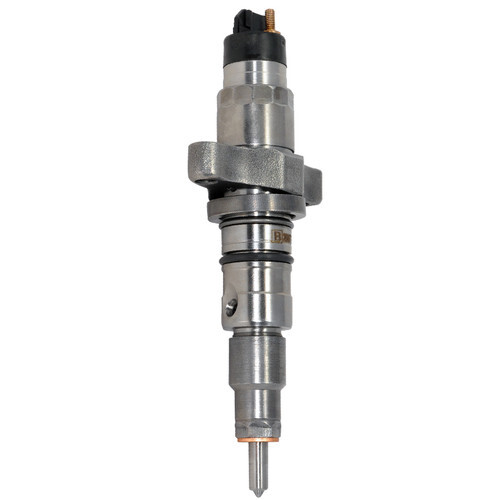
Cummins ISX Series: Heavy Duty Excellence
The ISX series represents Cummins flagship heavy duty engine platform, powering the majority of Class 8 trucks across North America. These engines deliver exceptional performance, fuel economy, and reliability in the most demanding applications from long haul transportation to severe service vocational trucks.
Development and Innovation
ISX development began in the late 1990s as emissions regulations tightened:
- Interact System (IS) combined with X platform
- Initial displacement of 14.9 liters
- 5.39 inch bore and 6.65 inch stroke configuration
- Produced up to 600 horsepower initially
- Evolved into current X15 platform
The dual overhead cam design distinguished ISX engines from previous Cummins heavy duty offerings. This configuration enabled precise valve timing control and improved breathing at high RPM. Integrated engine brakes provide exceptional retarding power, critical for mountain operation and extended brake component life.
Advanced Injection Technology
- Early Celect system provided electronic control
- Transitioned to common rail for improved efficiency
- Current XPI system operates at 35,000+ PSI
- Multiple injection events optimize combustion
- Reduced emissions with improved fuel economy
Cooled EGR technology premiered on ISX engines to meet 2002 emissions standards. The massive EGR cooler transfers significant heat to engine coolant, demanding robust cooling system capacity. EGR valve maintenance and cooler cleaning represent critical service items for maintaining performance and preventing costly failures.
Turbocharging Excellence
Variable geometry turbocharging became standard on later ISX engines:
- Holset HE551 and HE561 turbochargers
- Sliding nozzle design differs from light duty systems
- Provides responsive power delivery across RPM range
- Proper air filter maintenance prevents damage
- Electronic controls optimize boost pressure
The transition to SCR technology with 2010 emissions standards improved fuel economy while meeting strict NOx limits. The aftertreatment system includes DOC (Diesel Oxidation Catalyst), DPF, and SCR components in a single assembly. Periodic cleaning or replacement of aftertreatment components represents a significant maintenance expense.
Million Mile Durability
ISX engines earned their reputation through proven longevity. The robust bottom end features massive main bearings and connecting rod bearings designed for extended service. Replaceable wet liners enable in frame overhauls that restore performance without complete engine replacement. Advanced engine management systems optimize performance while protecting components from damage.
The evolution to X15 designation brought refinements:
- Improved fuel economy through optimization
- Enhanced performance across operating range
- Efficiency Series targets fuel economy leadership
- Performance Series prioritizes power output
- Application-specific calibrations available
Essential Maintenance for Cummins Engines
Critical Service Intervals
Proper maintenance transforms Cummins engines from merely reliable to practically indestructible. Following manufacturer recommendations while understanding how operating conditions affect service requirements ensures maximum longevity and minimal unplanned downtime.
Oil Change Requirements:
- Modern engines specify up to 15,000-mile intervals
- Severe service demands shorter periods
- Extended idle time accelerates degradation
- Frequent regeneration cycles impact oil life
- Extreme temperatures affect change intervals
- Oil analysis programs optimize schedules
Filter quality significantly impacts engine protection and longevity. Genuine Cummins or equivalent quality filters provide specified filtration efficiency and capacity. Inferior filters may initially cost less but risk catastrophic damage from contaminants reaching critical components. Fuel filters deserve particular attention as modern high pressure injection systems tolerate minimal contamination.
Cooling System Maintenance
Modern engines require specific coolant formulations meeting Cummins specifications:
- Test for proper additive levels regularly
- Monitor for combustion gas contamination
- Complete replacement at specified intervals
- Use only approved coolant types
- Inspect hoses and clamps during service
Regular testing ensures proper additive levels and identifies contamination before damage occurs. Complete coolant replacement at specified intervals removes accumulated contaminants that testing cannot detect. Bostech Auto provides all necessary components for comprehensive cooling system service.
Valve and Fuel System Care
Valve adjustment maintains optimal performance while preventing component damage. Mechanical engines require periodic adjustment as components wear, while electronic engines may extend intervals through improved materials and design. Incorrect valve lash causes poor performance, increased emissions, and potential valve train damage. Following factory procedures ensures proper adjustment without damaging components.
Fuel System Maintenance:
- Water separator draining prevents corrosion
- Quality additives improve lubricity
- Regular filter changes protect injection components
- Periodic injector cleaning restores patterns
- Monitor fuel quality consistently
- Address contamination immediately
Air Filtration Impact
Air filtration directly impacts turbocharger life and engine longevity:
- Check restriction indicators regularly
- Inspect for filter damage or leaks
- Replace secondary safety filters periodically
- Examine intake piping for cracks
- Ensure proper filter seating
- Clean air provides maximum engine protection
Belt and hose inspection prevents roadside failures and collateral damage. Serpentine belts driving accessories gradually wear and crack with age and heat exposure. Cooling system hoses deteriorate internally before showing external signs of failure. Preventive replacement during scheduled maintenance eliminates emergency repairs and potential engine damage from overheating.
Aftertreatment System Service
- DPF cleaning removes accumulated ash
- DEF quality affects SCR performance
- EGR system cleaning prevents restriction
- Follow prescribed maintenance schedules
- Use approved cleaning procedures
- Document all aftertreatment service
Modern emissions equipment requires specific maintenance protocols. Following manufacturer guidelines ensures compliance while maintaining performance. Ignoring aftertreatment maintenance leads to expensive repairs and potential engine damage.
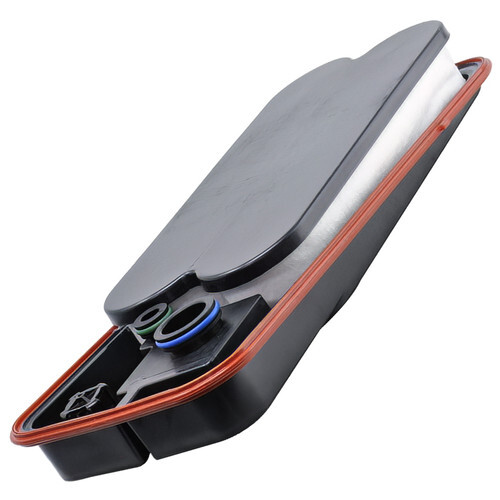
Common Cummins Engine Problems and Solutions
Understanding common Cummins engine problems enables proactive maintenance and rapid diagnosis when issues arise. While Cummins engines prove exceptionally reliable, certain patterns emerge across different models and applications. Recognizing symptoms early prevents minor issues from becoming major repairs.
Turbocharger Failures
Common Symptoms:
- Excessive smoke during acceleration
- Loss of power under load
- Unusual turbo whistle or whine
- Oil consumption increases
- Check engine lights related to boost
Sticking vanes in variable geometry turbos cause poor performance and potential engine damage. Regular cleaning with approved solvents prevents vane sticking, while complete turbocharger replacement becomes necessary once damage occurs. Proper air filtration and oil change intervals significantly extend turbocharger life. Early intervention prevents catastrophic failure and collateral damage.
Injection System Issues
VP44 injection pumps on second generation 5.9L engines suffer from inadequate fuel supply causing premature failure. Installing quality lift pumps providing proper pressure and flow prevents most VP44 failures. Common rail injector failures often result from contaminated fuel or excessive heat cycles. Regular fuel filter changes and quality fuel minimize injection system problems.
Prevention Strategies:
- Install quality lift pumps on VP44 engines
- Maintain 10-15 PSI fuel supply pressure
- Change fuel filters at recommended intervals
- Use quality fuel from reputable sources
- Add lubricity additives to ULSD fuel
Head Gasket and Cooling Problems
Head gasket failures occasionally affect higher mileage engines:
- Coolant loss without visible leaks indicates internal failure
- White exhaust smoke suggests coolant burning
- Pressurized cooling system points to combustion leaks
- Oil contamination appears as milky substance
- Common on modified or overheated engines
Upgraded head studs and multi layer steel gaskets provide permanent solutions when properly installed. Addressing cooling system problems prevents repeat failures. Professional installation ensures proper sealing and longevity.
EGR System Complications
EGR Cooler Failures: Internal coolant passages crack or become restricted over time, causing coolant loss or overheating symptoms. Updated designs improve durability, while regular coolant maintenance extends EGR cooler life by preventing corrosion and deposits. Some owners opt for delete kits where legally permitted, though this affects emissions compliance.
Grid Heater Issues (6.7L):
- Hard starting in cold weather
- Elements can break causing engine damage
- Regular inspection prevents catastrophic failure
- Upgraded designs available from Bostech Auto
- Block heaters provide backup cold start aid
Oil Dilution Concerns
Modern engines with DPF systems face unique challenges from active regeneration:
- Fuel enters crankcase during regeneration
- Dilutes oil reducing lubrication properties
- Frequent analysis identifies dilution early
- Proper driving promotes passive regeneration
- Shorter intervals prevent bearing damage
Camshaft and lifter failures occasionally affect high mileage engines, particularly those with extended oil change intervals. Worn lobes cause rough idle, reduced power, and increased noise. Complete camshaft replacement typically includes lifters and associated components for reliable repair. Quality oil and appropriate change intervals prevent most valvetrain wear issues.
Performance Upgrades and Modifications
Electronic Tuning Options
Cummins engines respond exceptionally well to performance modifications, with even basic upgrades yielding impressive gains. Electronic tuning represents the most cost effective performance upgrade for modern Cummins engines.
Available Tuning Levels:
- Economy tunes improve fuel efficiency
- Towing tunes optimize heavy load performance
- Performance tunes increase horsepower significantly
- Custom tunes match specific modifications
- Switch programmers offer multiple options
Conservative tunes improve throttle response and towing performance while aggressive settings support competition use. Selecting appropriate tune levels for intended use prevents premature component failure. Bostech Auto offers programming solutions for various applications.
Airflow Improvements
Intake and exhaust modifications work together to improve engine breathing. Cold air intake systems reduce restriction while providing cooler, denser air charge. Performance exhaust systems reduce back pressure and exhaust gas temperatures. Combining intake and exhaust upgrades with appropriate tuning maximizes benefits while maintaining safe operating parameters.
Turbocharger Upgrades:
- Drop-in replacements for moderate gains
- Larger frame turbos for significant power
- Compound systems eliminate lag
- Variable geometry upgrades improve response
- Supporting modifications become necessary
Fuel System Enhancements
- Lift pumps ensure adequate supply pressure
- Prevent injection pump starvation
- Larger injectors flow additional fuel
- Modified pumps increase rail pressure
- Balance modifications prevent excess smoke
Fuel system enhancements support increased power demands from other modifications. Proper sizing and quality components ensure reliable operation at elevated power levels. Bostech Auto provides complete fuel system upgrade packages.
Supporting Modifications
Transmission upgrades handle increased torque from engine modifications:
- Manual transmissions need upgraded clutches
- Automatics require built internals
- Torque converters must handle power
- Differentials need strengthening
- Driveshafts require balancing
Cooling System Improvements: Managing additional heat from increased power requires comprehensive cooling upgrades. Larger radiators provide greater heat rejection capacity. Electric fans improve airflow at low speeds. Additional coolers for transmission and differential fluids prevent overheating under severe use. Maintaining proper operating temperatures ensures longevity despite increased power levels.
Internal Engine Upgrades
- Head studs prevent gasket failures
- Provide additional clamping force
- Handle extreme cylinder pressures
- Allow multiple assembly cycles
- Professional installation critical
Bottom end modifications support extreme power levels beyond factory limits. Forged pistons and connecting rods handle increased cylinder pressures and RPM. Girdle plates strengthen main bearing caps preventing block deflection. Balanced rotating assemblies reduce vibration and stress. These modifications enable four digit horsepower while maintaining reasonable reliability.
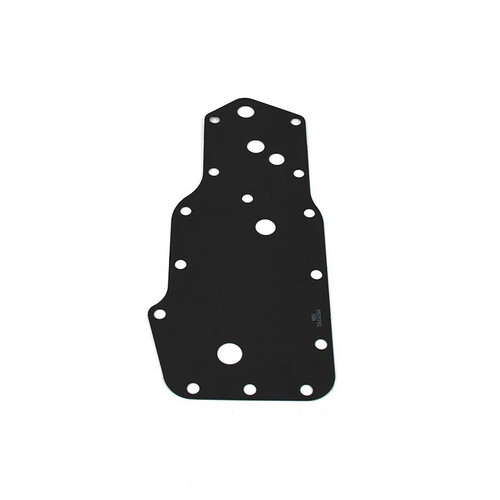
Selecting Quality Replacement Parts
OEM vs Aftermarket Considerations
Choosing appropriate replacement parts significantly impacts Cummins engine reliability, performance, and service life. While genuine Cummins parts provide guaranteed compatibility and quality, aftermarket alternatives from reputable manufacturers like Bostech Auto offer comparable performance at competitive prices.
OEM Advantages:
- Guaranteed compatibility with engines
- Meet original performance standards
- Include manufacturer warranty coverage
- Available through dealer networks
- Documented quality control processes
Original equipment manufacturer specifications provide baseline requirements for replacement parts. Components meeting or exceeding OEM standards ensure proper fit, function, and durability. Inferior parts may initially seem attractive due to lower cost but often result in premature failure, additional labor, and potential collateral damage.
Critical Component Quality
Gasket and seal quality directly affects reliability:
- Multi layer steel head gaskets provide superior sealing
- Viton seals resist fuel and oil degradation
- Complete sets ensure consistent quality
- Proper materials for each application
- Temperature and pressure ratings matter
Fuel Injection Components: Remanufactured injectors from reputable suppliers undergo comprehensive testing ensuring proper flow rates and spray patterns. New nozzles, solenoids, and internal components restore original performance. Core exchange programs reduce cost while maintaining quality standards. Bostech Auto offers complete injection system solutions.
Turbocharger Selection
- Match frame size to application needs
- Verify turbine housing specifications
- Ensure compressor wheel compatibility
- Balanced assemblies prevent failures
- Quality rebuilds include all wear items
Proper turbocharger selection requires matching specifications to application requirements. Quality rebuilds include new bearings, seals, and worn components while retaining serviceable housings. Professional balancing ensures smooth operation and extended life.
Sensor and Electrical Quality
Premium sensors provide accurate readings throughout service life, while inferior units may provide erratic signals causing poor performance or false trouble codes. OEM equivalent sensors ensure proper communication with engine control modules. Electrical components require careful selection to prevent failures and ensure compatibility.
Filter Selection Criteria:
- Efficiency ratings indicate filtration capability
- Capacity determines service intervals
- Micron ratings specify particle removal
- Beta ratios show efficiency percentages
- Reputable manufacturers publish specifications
Cooling System Components
Water pump selection affects cooling system reliability:
- Robust bearings ensure extended life
- Precise impeller design optimizes flow
- Effective seals prevent leaks
- Cast iron housings for commercial use
- Quality coolant prevents premature failure
Alternators must provide adequate output for electrical demands including aftermarket accessories. Starter motors need sufficient torque for reliable cold weather starting. Quality batteries designed for diesel applications provide necessary cranking amperage and reserve capacity.
Cummins vs Competition: Making the Right Choice
Ford Power Stroke Analysis
Comparing Cummins engines to competing diesel platforms helps understand relative strengths and optimal applications. Power Stroke engines from Ford provide integrated powertrains with sophisticated technology and refined operation.
Power Stroke Characteristics:
- Advanced technology integration
- Quiet, refined operation
- Compact V8 packaging
- Complex emissions systems
- Higher maintenance costs in severe service
The 6.7L Power Stroke features advanced turbocharging and comprehensive emissions systems. However, complexity increases maintenance costs and some components prove problematic in severe service. Power Stroke engines excel in daily driver applications prioritizing refinement over ultimate durability.
GM Duramax Comparison
Duramax engines emphasize smooth operation and advanced technology:
- Aluminum heads reduce weight
- Sophisticated injection systems
- Exceptional refinement and efficiency
- Advanced technology throughout
- Premium driving experience
Yet aluminum construction raises durability concerns in extreme applications, and proprietary components increase repair costs. Duramax engines suit buyers prioritizing driving experience and technology integration over maximum longevity.
Cummins Advantages
Why Choose Cummins:
- Inline six configuration provides superior balance
- Better accessibility simplifies maintenance
- Widespread parts availability reduces costs
- Extensive service network support
- Conservative proven designs
- Million mile capability documented
Cummins engines prioritize durability and serviceability over other considerations. The inline configuration provides superior balance and accessibility compared to V8 competitors. Widespread parts availability and service network support reduce operating costs. Conservative designs proven through millions of miles inspire confidence in commercial applications.
Other Diesel Platforms
International MaxxForce engines struggled with EGR only emissions strategies that proved problematic. Reliability issues led to eventual discontinuation, though earlier mechanical engines like the DT466 earned excellent reputations. International's partnership with Cummins for current production acknowledges diesel expertise.
Detroit Diesel Presence:
- Dominates specific commercial segments
- Vertical integration with Freightliner
- DD15 and DD13 competitive offerings
- Extensive telematics integration
- Limited availability outside captive applications
Total Cost Analysis
Cost considerations extend beyond initial purchase:
- Parts availability and pricing
- Service network accessibility
- Fuel economy differences
- Resale value retention
- Downtime costs
- Warranty coverage differences
Cummins engines typically command premium pricing reflecting reputation and demand. However, superior parts availability, widespread service networks, and proven longevity often offset higher acquisition costs. Documented resale values demonstrate market confidence in Cummins powered vehicles.
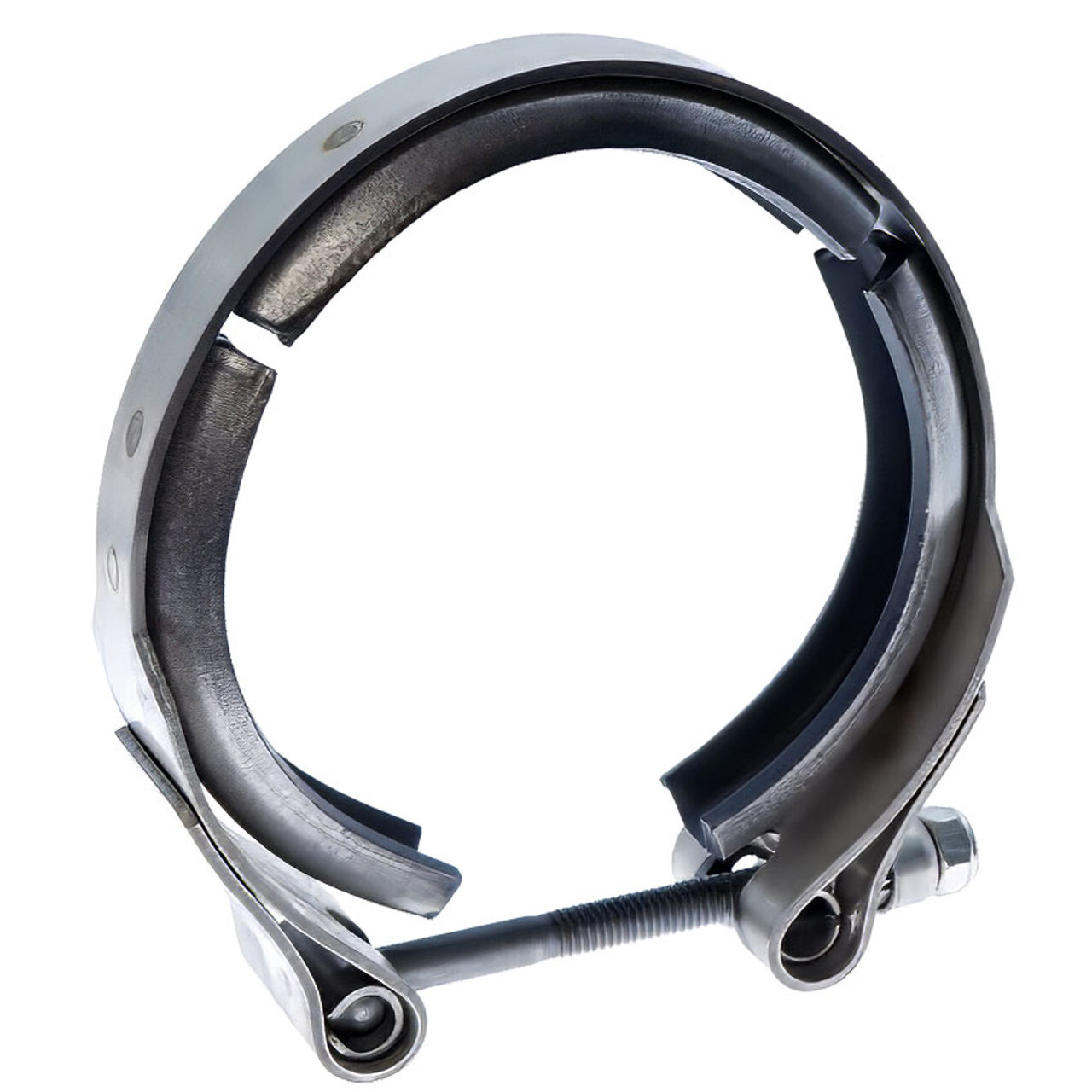
Professional Installation and Service Tips
Cleanliness Standards
Professional installation and service techniques ensure reliable repairs that maintain Cummins engine integrity. Contamination prevention remains critical throughout any service procedure.
Clean Work Practices:
- Thoroughly clean before disassembly
- Cap or plug all openings immediately
- Use appropriate cleaning solvents
- Maintain organized work environment
- Filter fluids during installation
- Prevent debris entry into systems
While basic maintenance remains accessible to skilled technicians, complex procedures demand specialized knowledge and tools. Following established procedures prevents costly mistakes and ensures quality results.
Torque Specifications
Proper torque application ensures component reliability:
- Follow prescribed sequences exactly
- Use calibrated torque wrenches
- Apply proper thread lubricants
- Understand angle torque methods
- Record all torque values
- Verify application specifications
Critical Applications: Following prescribed sequences distributes loads evenly preventing distortion. Using calibrated torque wrenches ensures accuracy, while angle torque methods provide consistent stretch in critical applications. Recording torque values documents proper installation for warranty or diagnostic purposes.
Measurement and Inspection
- Check bearing clearances carefully
- Measure cylinder bore dimensions
- Inspect crankshaft journals
- Verify camshaft lobe profiles
- Check valve guide clearances
- Document all measurements
Measurement and inspection identify wear before assembly, preventing immediate or premature failure. Checking bearing clearances ensures adequate oil films preventing metal contact. Investing time in thorough inspection prevents comeback repairs and ensures customer satisfaction.
Special Tool Requirements
Special tools enable proper service without component damage:
- Injector removal tools prevent sleeve damage
- Cam timing tools ensure valve timing
- Seal installers prevent damage
- Bearing installers ensure seating
- Diagnostic equipment for electronics
While special tools represent significant investment, they prevent costly damage and ensure quality repairs. Bostech Auto can recommend appropriate tools for specific applications.
Documentation Best Practices
Record Keeping Benefits:
- Track wear rates over time
- Identify developing problems early
- Support warranty claims
- Demonstrate professional service
- Create service history
- Enable trend analysis
Documentation throughout service provides valuable reference for future work. Recording measurements enables tracking wear rates identifying developing problems. Photographing assemblies before disassembly aids reassembly and identifies missing or incorrect components.
Break In Procedures
Proper break in ensures component longevity:
- Vary loads and speeds initially
- Monitor temperatures closely
- Check pressures frequently
- Change oil early
- Follow manufacturer guidelines
- Document break in process
Varying loads and speeds during initial operation promotes proper ring seating. Monitoring temperatures and pressures identifies problems before damage occurs. Following manufacturer recommendations for oil changes removes break in contaminants.
Bringing It All Together…
Cummins diesel engines continue setting benchmarks for reliability, performance, and longevity across multiple market segments. From the legendary 5.9L that established Cummins reputation in pickup trucks to the advanced X15 dominating commercial transportation, these engines deliver unmatched value for discriminating buyers who demand the best.
Understanding your Cummins engine enables informed maintenance decisions that maximize reliability while minimizing operating costs. Regular maintenance using quality parts prevents most common problems, while prompt attention to developing issues prevents minor concerns from becoming major repairs. Bostech Auto stands ready to support your Cummins engine with premium replacement parts, technical expertise, and commitment to customer satisfaction.
The evolution of diesel technology continues with stricter emissions standards, alternative fuels, and electrification presenting new challenges and opportunities. Yet Cummins remains committed to diesel excellence, continuously improving engines that power global commerce and personal transportation. Investment in Cummins powered equipment provides confidence that parts, service, and support will remain available for decades.
Whether you operate a single pickup truck or manage a commercial fleet, Cummins engines reward proper care with exceptional service life. Following maintenance schedules, using quality parts, and addressing issues promptly ensures your Cummins engine delivers reliable power mile after mile. Trust Bostech Auto for all your Cummins engine needs, from routine maintenance items to complete overhaul components.
The diesel industry continues evolving, but Cummins engines remain the standard by which others are measured. Their combination of proven durability, widespread support, and continuous improvement ensures Cummins powered vehicles retain value and provide dependable service. Make informed decisions about maintenance, modifications, and repairs to maximize your Cummins engine investment.
Contact Bostech Auto today for expert guidance selecting appropriate parts for your Cummins engine application. Our technical specialists understand these engines inside and out, helping you maintain peak performance while controlling costs. Experience the difference quality parts and knowledgeable support make in keeping your Cummins engine running strong for years to come.
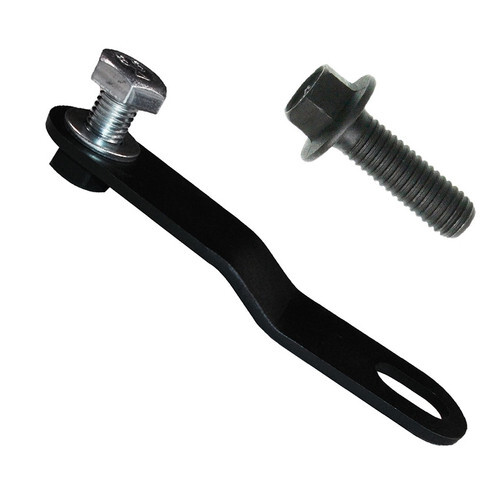
Frequently Asked Questions
Cummins engines routinely achieve 300,000 to 500,000 miles in pickup truck applications with proper maintenance. Commercial ISX and X15 engines often exceed one million miles before requiring major overhaul. Longevity depends primarily on maintenance quality, operating conditions, and application severity. Regular oil changes, quality filters, and addressing problems promptly significantly extend engine life. Many Cummins engines remain serviceable through multiple overhauls, with replacement parts readily available from suppliers like Bostech Auto.
The 6.7L Cummins experiences several recurring issues including EGR cooler failures, turbocharger problems, and emissions system complications. EGR coolers develop internal cracks causing coolant loss or exhaust contamination. Variable geometry turbochargers suffer from sticking vanes due to soot accumulation. DPF systems require periodic cleaning to remove ash buildup. Grid heater failures cause cold start problems and potential engine damage. Head gasket failures occasionally occur on modified or overheated engines. Most problems prove preventable through proper maintenance and quality replacement parts.
Emissions equipment deletion remains controversial and legally complex. Federal law prohibits tampering with emissions systems on vehicles operated on public roads. Many states enforce additional regulations with significant penalties. Beyond legal considerations, deletion affects vehicle warranty, resale value, and inspection compliance. Modern emissions systems, when properly maintained, minimally impact performance while significantly reducing environmental impact. Consider legal implications and long term consequences before modifying emissions equipment.
Cummins engines require diesel rated oil meeting API CK4 or CJ4 specifications depending on model year. Viscosity recommendations vary by climate and application, with 15W40 suitable for most conditions and 5W40 providing better cold weather protection. Synthetic oils offer superior protection and extended drain intervals but cost more than conventional oils. Oil analysis programs identify optimal change intervals for specific applications. Quality oil from reputable manufacturers protects your investment in Cummins power.
Fuel filter replacement intervals depend on fuel quality, operating conditions, and specific engine model. Most manufacturers recommend replacement every 15,000 to 20,000 miles under normal conditions. Severe service including frequent idle time, questionable fuel quality, or extreme conditions requires shorter intervals. Water separator equipped filters need periodic draining between replacements. Using quality filters from Bostech Auto ensures proper filtration protecting expensive injection components.
Converting mechanical or VP44 equipped 5.9L engines to common rail technology proves technically possible but economically impractical. The conversion requires extensive component replacement including complete fuel system, engine harness, and electronic control modules. Cost often exceeds purchasing a complete common rail engine. Performance modifications to existing injection systems provide more cost effective power gains. Consider your goals and budget when evaluating upgrade options.
White smoke typically indicates coolant entering combustion chambers through failed head gaskets, cracked heads, or EGR cooler failures. During cold starts, temporary white smoke from condensation proves normal and dissipates once operating temperature reaches normal. Continuous white smoke demands immediate attention preventing hydraulic lock and catastrophic damage. Pressure testing cooling systems and cylinder leak down tests identify failure sources. Quality head gaskets and proper installation prevent repeat failures.
Fuel economy improvements start with proper maintenance including clean air filters, proper tire pressure, and quality fuel. Driving habits significantly impact consumption, with steady speeds and progressive acceleration reducing fuel use. Performance programmers offer economy tunes optimizing injection timing and duration. Aerodynamic improvements reduce drag at highway speeds. Synthetic lubricants reduce internal friction. Addressing maintenance issues promptly prevents efficiency losses that compound over time.
Each Cummins generation offers distinct advantages making "best" subjective to individual priorities. The 1998.5 to 2002 5.9L engines with VP44 injection provide good power with minimal emissions equipment. The 2003 to 2007 5.9L common rail engines balance modern technology with simplicity. Early 6.7L engines from 2007.5 to 2012 avoid later emissions complexity while providing substantial power. The 2013 to 2018 6.7L engines added SCR for improved efficiency. Current generation engines offer maximum power and efficiency with proven emissions systems. Consider intended use, modification plans, and maintenance preferences when selecting model years.
Stock turbochargers safely support moderate boost increases through tuning, typically 35 to 40 PSI on 5.9L engines and 40 to 45 PSI on 6.7L engines. Variable geometry turbos in newer engines tolerate higher pressures but require supporting modifications. Sustained high boost accelerates bearing wear and increases failure risk. Drive pressure ratios indicate turbocharger efficiency, with excessive drive pressure suggesting undersized turbine sections. Upgraded turbochargers support higher boost levels while maintaining reliability. Monitor exhaust gas temperatures and drive pressure when increasing boost beyond stock levels.
Cummins approves B20 biodiesel blends (20 percent biodiesel, 80 percent petroleum diesel) in most modern engines. Higher concentrations may affect fuel system components, particularly in older engines with rubber seals and hoses. Biodiesel provides excellent lubricity but can gel at higher temperatures than petroleum diesel. Water contamination poses greater risks with biodiesel requiring vigilant fuel system maintenance. Storage stability concerns limit biodiesel shelf life compared to conventional diesel. Check manufacturer recommendations for specific model years and applications.
Rough idle stems from various causes including injector problems, valve adjustment issues, and fuel quality concerns. Worn or sticking injectors create cylinder imbalances causing rough operation. Incorrect valve lash affects cylinder breathing and compression. Contaminated fuel or water in fuel causes combustion irregularities. Air in fuel systems creates inconsistent injection. Worn camshafts or lifters impact valve timing and lift. Systematic diagnosis starting with basic maintenance items identifies root causes. Quality replacement parts from Bostech Auto restore smooth operation.
Overhaul indicators include excessive oil consumption, low compression, bearing noise, and performance degradation. Oil consumption exceeding one gallon per 1,000 miles suggests ring or valve guide wear. Compression testing reveals cylinder sealing problems requiring attention. Knocking sounds indicate bearing wear demanding immediate action. Excessive blow by pressurizes crankcase requiring repair. Oil analysis identifies wear metals suggesting component degradation. Professional evaluation determines whether in frame refresh or complete overhaul provides best value.
Quality fuel additives provide multiple benefits including improved lubricity, water dispersion, and cleaning properties. Modern ultra low sulfur diesel lacks lubrication properties of older formulations, making lubricity additives beneficial. Anti gel additives prevent fuel system problems in cold weather. Cetane boosters improve combustion quality and cold starting. Water dispersants prevent corrosion and biological growth. Avoid additives making unrealistic claims or containing alcohol that damages injection systems. Regular use of quality additives extends fuel system component life.
Transmission selection depends on application requirements and personal preferences. Manual transmissions provide direct connection and ultimate control preferred by enthusiasts. The G56 Mercedes unit in Ram trucks handles stock power reliably. NV5600 transmissions offer proven durability with moderate power increases. Automatic transmissions like the 68RFE and Aisin AS69RC provide convenience with good reliability at stock power levels. Commercial applications utilize Eaton and Allison transmissions sized for vocational requirements. Consider power levels, intended use, and driving preferences when selecting transmissions.
